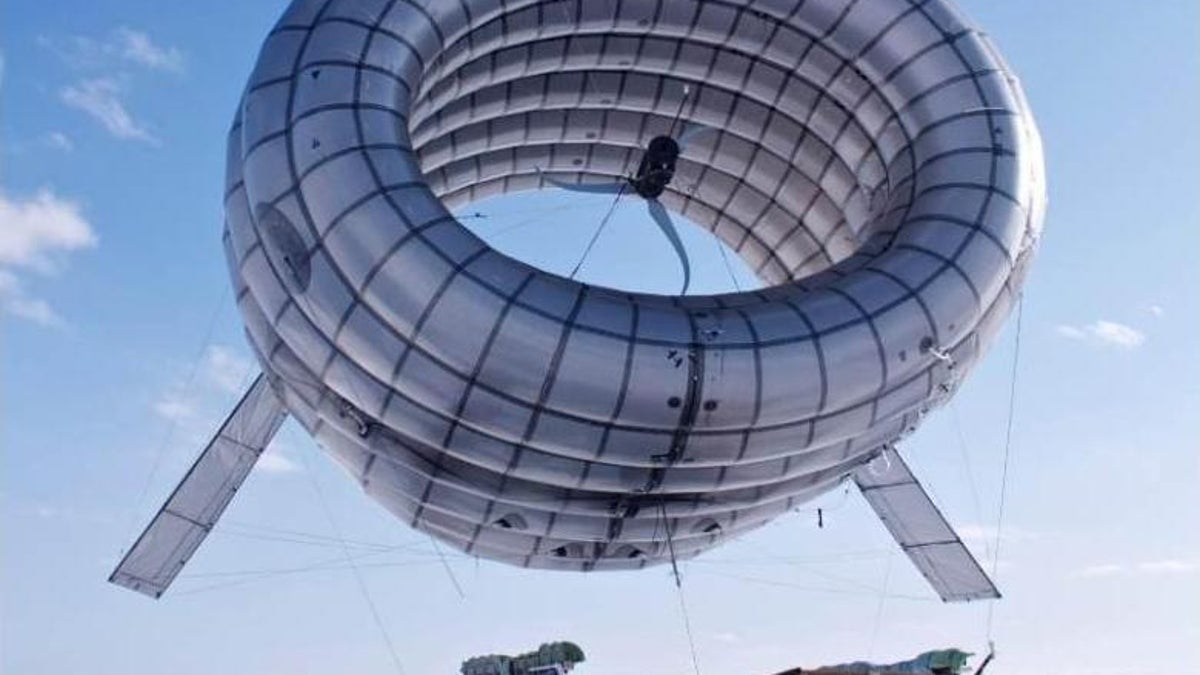Altaeros balloon boosts wind turbine power
Wind startup tests a prototype airborne wind turbine that uses a helium-filled shell to lift a small wind turbine into stronger and steady winds at higher altitudes.

Startup Altaeros Energy is going up for more energy.
The company yesterday said it has successfully tested a prototype of its airborne wind turbine, which is a traditional small wind turbine enclosed in an inflatable shell. The Boston-based company is seeking to partner with others to build and test a commercial-scale turbine.
Altaeros Energy is one of a few companies developing systems to capture the stronger and steadier winds at high altitudes. Others include Makani Power, Joby Energy, and Windlift.
For its prototype test in Maine, Altaeros Energy placed a Southwest Skystream turbine, which is normally placed on a pole, inside a helium-filled shell. The entire machine is tethered by a cable which transmits electricity and was lifted to 350 feet.
At that height, the Skystream turbine produced more than twice the power than a typical tower-mounted one, according to Altaeros Energy. The prototype test also automatically hoisted and lowered the airborne turbine, which was attached to a towable trailer.
"Modern inflatable materials can lift wind turbines into more powerful winds almost everywhere -- with a platform that is cost competitive and easy to setup from a shipping container," CEO Ben Glass said in a statement. The technology is designed to capture wind over 1,000 feet, he added.
Altaeros Energy is going after a very specific market with its first-generation product of locations that rely on diesel generators. That could include military bases or remote off-grid industrial sites or villages. Longer term, it hopes to deploy its inflatable turbines offshore.
The shell itself was made by a sail-making company and the launcher was converted from industrial blimps called aerostats used for heavy communications and radar equipment.

